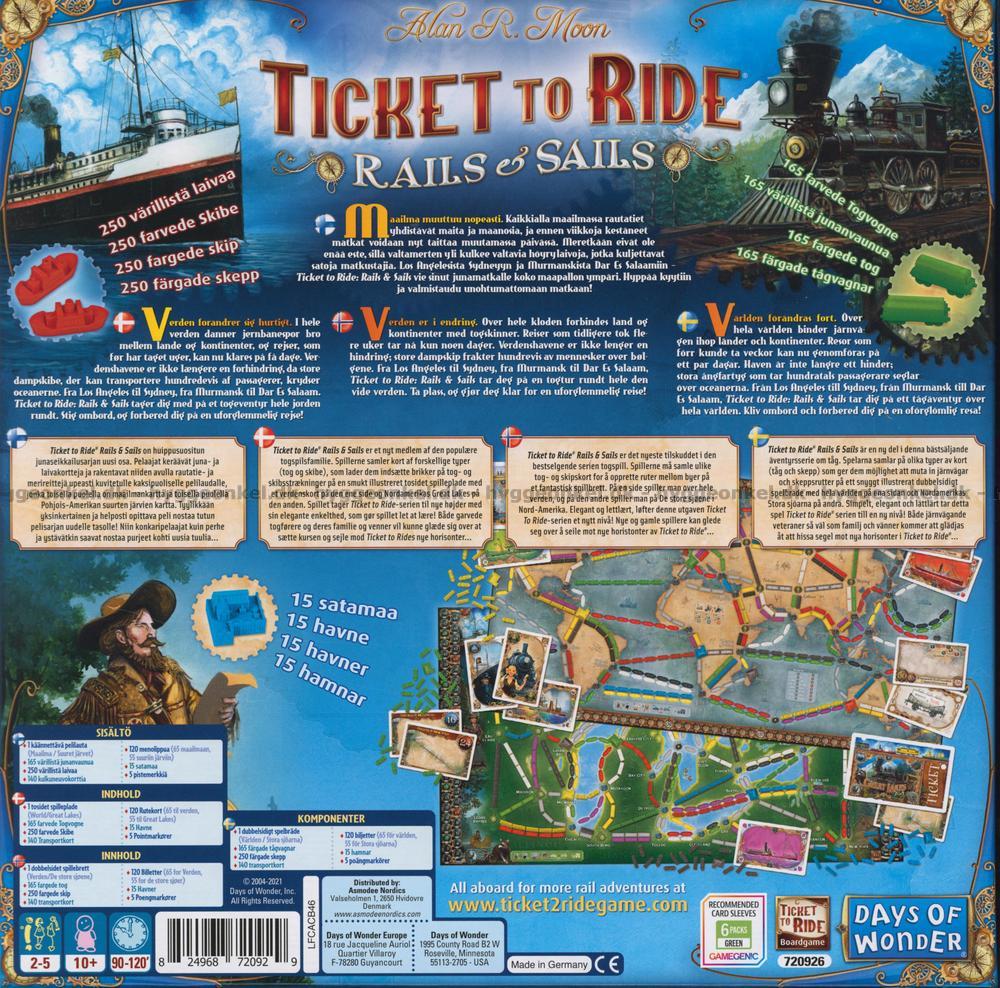

In both variants these bonus points are based upon how many completed destination tickets a player has into that port city. If a player has a route built to a city with a port symbol, a player can choose to spend two train and two ship cards of matching colour, all including the anchor symbol, to build a harbour there.Ĭhoosing the right city to build in is key as players can gain up to 30 or 40 bonus points, for World and Great Lakes respectively. Harbours provide huge potential point swings at the end of the game, with each player starting with three. The second new action is to build a Harbour. Two new actions, including the aforementioned piece exchange, become available to players, on top of taking travel cards, claiming a route or drawing destination tickets. It isn’t until drawing cards from the six on the table that their use to reduce the overall length of the game becomes apparent.

Therefore, on the surface this inclusion seems an unnecessary one. Despite the long shape of the board it doesn’t visually look as crammed with routes as other variants. Playing these double ship cards, as expected, count as two towards a routes cost, with overpayment allowed. Players still have the ability to top draw from the draw decks, so it is more limiting in choice than completely stopping the action.Īn interesting difference is that ship cards can feature either one or two ships via a smack symbol. Whenever a player draws a travel card they get to choose which draw deck the card is replaced from, so it is entirely possible that no ship cards or no train cards are face up. Two independent draw decks are kept and at the offset of the game 3 of each card type are filled over to form a pool of 6 available cards. With two types of travel comes two types of travel tickets, renamed from merely train tickets. This isn’t cheap but if it enables a player to finish a route it can easily be worthwhile. While this choice is important it isn’t entirely game defining as a player can choose, instead of a normal action, to swap in-play pieces with those in the box at a cost of 1 point per piece. It is left up to individual players on what 60 pieces they keep, with some help from their starting destination tickets. However, using World as an example, each player at the start of the game receives 25 trains and 50 ships. Unlike, other variants this isn’t just via train-based ferries, players will be building routes with ship pieces.įor your first game, the rules suggest each player starts with 20 trains and 40 ships for World and 23 ships and 27 trains for Great Lakes.

First and foremost is the biggest change, as the name suggests players will be building routes across both land and water. As a result, I’ll aim to comment on the changes this brings to the gameplay of the “standard” variants of the franchise. Though not a direct expansion, as with the map packs, Ticket to Ride: Rails & Sails can be considered above the normal base games. However, with a both rails and sails to deal with is this a step to far from the iconic gameplay the franchise is known and loved for? Let’s find out! One side of the board, rather than a specific territory, country or even continent features a global map. An average game takes a bit longer than a normal Ticket to Ride franchise game, lasting around 1.5 hours.
Ticket to ride rails and sails board series#
This is the first game in the series that players will not only be constructing train routes across land but also sail across the oceans and seas. Ticket to Ride: Rails & Sails is a travel themed set collection and route building board game from designer Alan R.


 0 kommentar(er)
0 kommentar(er)
